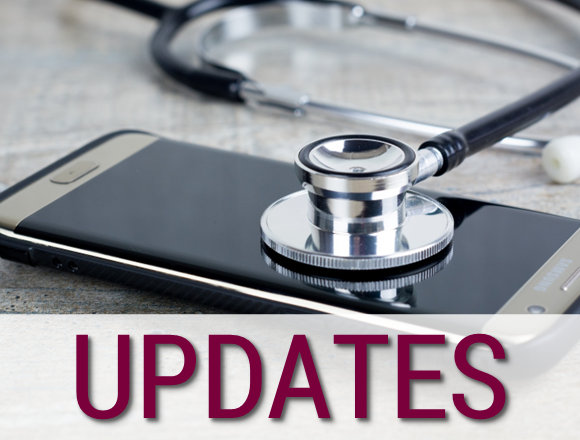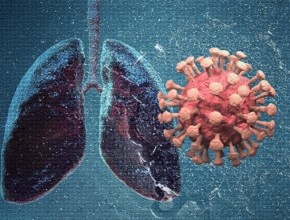Anticoagulation in critically and noncritically ill patients with COVID-19
For a McMaster Perspective interview with Dr James Douketis on the results of the trials, click here. For an interview with Dr Ryan Zarychanski, senior author of the articles discussed below, click here.
Background: Early on during the coronavirus disease 2019 (COVID-19) pandemic, it was observed that patients who were hospitalized with COVID-19 pneumonitis had a high prevalence of thrombosis, occurring in 10% to 30% of patients despite the use of low-dose anticoagulant thromboprophylaxis regimens such as heparin 5000 IU bid. This observation prompted clinicians to hypothesize whether COVID-19 was a hypercoagulable disease and whether higher-intensity anticoagulation with full-dose (or therapeutic-dose) heparin would reduce morbidity and mortality related to COVID-19.
Methods: This study was a collaboration of 3 large trials, comprising the ATTACC (Antithrombotic Therapy to Ameliorate Complications of Covid-19) trial, the ACTIV-4a (Multicenter, Adaptive, Randomized Controlled Platform Trial of the Safety and Efficacy of Antithrombotic Strategies in Hospitalized Adults with COVID-19), and the REMAP-CAP (Randomized, Embedded, Multifactorial Adaptive Platform Trial for Community-Acquired Pneumonia). An open-label, adaptive, multiplatform, randomized trial design was used, wherein the trial protocols were harmonized to allow patients and outcomes to be combined. The study was published in 2 separate reports: one involving severely ill patients who were in an intensive care unit (ICU) setting or were at least receiving what was considered ICU-type interventions (oxygen through a high-flow nasal cannula, noninvasive or invasive mechanical ventilation, extracorporeal life support, vasopressors, or inotropes), and the second one involving moderately ill hospitalized patients who were not receiving such interventions. As part of the pragmatic, open-label design, patients were randomly allocated to receive either full-dose (therapeutic-dose) anticoagulation with intravenous unfractionated heparin (eg, targeted to activated partial thromboplastin time [aPTT] of 1.5 to 2 times the control aPTT) or subcutaneous low-molecular-weight heparin (LMWH; eg, enoxaparin 1 mg/kg bid, dalteparin 200 IU/kg daily, or tinzaparin 175 IU/kg daily) or low-dose anticoagulant prophylaxis (eg, heparin 5000 IU bid, enoxaparin 40 mg daily, dalteparin 5000 IU daily). The heparin regimens used were based on local practice; overall, most patients (94.7%) received LMWH.
Critically ill patients
Primary outcome: In the study of severely ill (receiving ICU-type interventions) patients with COVID-19, the primary outcome was organ support–free days, evaluated on an ordinal scale, that combined in-hospital death (assigned a value of -1) and the number of days free of cardiovascular or respiratory organ support up to day 21 among patients who survived to hospital discharge.
Results: The trial was stopped when the prespecified criterion for futility was met for full-dose anticoagulation. In 1098 patients studied the median number of organ support–free days was 1 (interquartile range [IQR], -1 to 16) for patients who received full-dose anticoagulation and 4 (IQR, -1 to 16) for patients who received low-dose anticoagulation (adjusted proportional odds ratio [apOR], 0.83; 95% CI, 0.67-1.03). The proportion of patients who survived to hospital discharge was similar in the full- and low-dose heparin groups: 62.7% and 64.5% (representing >35% overall mortality) (adjusted odds ratio [aOR], 0.84; 95% CI, 0.64-1.11). As for the secondary outcomes, there was a nonsignificantly higher rate of major bleeding in the full-dose heparin group compared with the low-dose heparin group: 3.8% versus 2.3% (aOR, 1.48; 95% CI, 0.75-3.04). There were fewer patients with a major thrombotic event in the full-dose anticoagulation group than in the low-dose anticoagulation one: 6.4% versus 10.4%; the incidence of major thrombotic events or death was similar in the full- and low-dose anticoagulation groups: 40.1% versus 41.1% (median aOR, 1.04; 95% CI, 0.79-1.35).
Conclusions: The authors concluded that in severely ill (receiving ICU-type interventions) patients with COVID-19, full-dose anticoagulation with heparin did not result in a greater probability of survival to hospital discharge or a greater number of days free of cardiovascular or respiratory organ support compared with low-dose anticoagulation.
Noncritically ill patients
Primary outcome: In the trial of moderately ill (not receiving ICU-type interventions) patients with COVID-19, the primary outcome of organ support–free days, evaluated on an ordinal scale, that combined in-hospital death and the number of days free of cardiovascular or respiratory organ support up to day 21 among patients who survived to hospital discharge was evaluated with a Bayesian statistical model for all patients and according to their baseline D-dimer levels.
Results: The trial was stopped when the prespecified criteria for superiority of full-dose anticoagulation were met. In 2219 patients studied the probability that full-dose anticoagulation increased organ support–free days as compared with low-dose anticoagulation was 98.6% (aOR, 1.27; 95% CI, 1.03-1.58). The adjusted absolute between-group difference in survival until hospital discharge without organ support favoring full-dose anticoagulation was 4 percentage points (95% CI, 0.5-7.2). The final probability of the superiority of therapeutic-dose anticoagulation over usual-care thromboprophylaxis was 97.3% in the high D-dimer cohort, 92.9% in the low D-dimer cohort, and 97.3% in the unknown D-dimer cohort. As regards secondary outcomes, there were no statistically significant differences between the treatment groups for the outcomes of major bleeding (1.9% vs 0.9%; aOR, 1.8; 95% CI, 0.9-3.74) or survival until hospital discharge (92.7% vs 91.8% (representing mortality of 7.3 vs 8.2%; aOR, 1.21; 95% CI, 0.87-1.68), but there was a significant difference favoring full-dose anticoagulation for the outcome of major thrombosis or death (8.0% vs 9.9%; aOR, 0.72; 95% CI, 0.53-0.98).
Conclusions: The authors concluded that in noncritically ill patients with COVID-19, full-dose anticoagulation with heparin increased the probability of survival to hospital discharge with a reduced use of cardiovascular or respiratory organ support as compared with low-dose anticoagulation.
McMaster editors’ comment: This tripartite collaborative study assessing the clinical benefit of heparin for hospitalized patients with COVID-19 is groundbreaking and paradigm altering in several ways: First, it is the first study to address the novel paradigm of thromboinflammation, namely, the development of in situ (pulmonary) thrombosis, occurring as a consequence of inflammation rather than through embolic mechanisms. Second, it is the first study in which full-dose (therapeutic-dose) heparin was used in patients without confirmed thrombosis. Third, it is the first large trial to test the hypothesis that heparins may prevent thrombosis through direct anticoagulant effects and via pleiotropic anti-inflammatory mechanisms.
The principal study result is that full-dose heparin confers a net therapeutic benefit in moderately ill hospitalized patients with COVID-19 but not in severely ill (requiring ICU-type interventions) patients. A possible explanation for this somewhat counterintuitive finding is that there is a therapeutic “sweet spot” during the course of COVID-19 pneumonitis, where the thromboinflammatory process is not too advanced so that it can be mediated by heparin while not incurring an increase in bleeding risk. Although the heparin regimen used was driven by local practice, it is noteworthy that most patients received LMWH as a full- or low-dose regimen. It is also of note that in moderately ill patients, the net therapeutic benefit was observed irrespective of the baseline D-dimer level, which is a prognostic determinant in COVID-19 pneumonitis. Moreover, despite administering full-dose heparin, an increased bleeding risk was not observed in moderately ill patients.
Clinicians involved in the care of non-ICU hospitalized patients with COVID-19 pneumonitis should reach for a full-dose heparin regimen (LMWH is preferred due to fixed dosing without the need for laboratory monitoring) alongside other established treatments that include dexamethasone, remdesivir, and tocilizumab.
The remaining issue is the threshold between the 2 populations. For study authors this threshold was breeched with the use of high-flow nasal cannula or noninvasive ventilation—2 interventions with different patterns of use and different availability, probably making such distinction somehow arbitrary. In those “borderline” situations clinicians will likely rely on the perceived risk of bleeding and judgment on the stage of the disease.
 English
English
 Español
Español
 українська
українська











